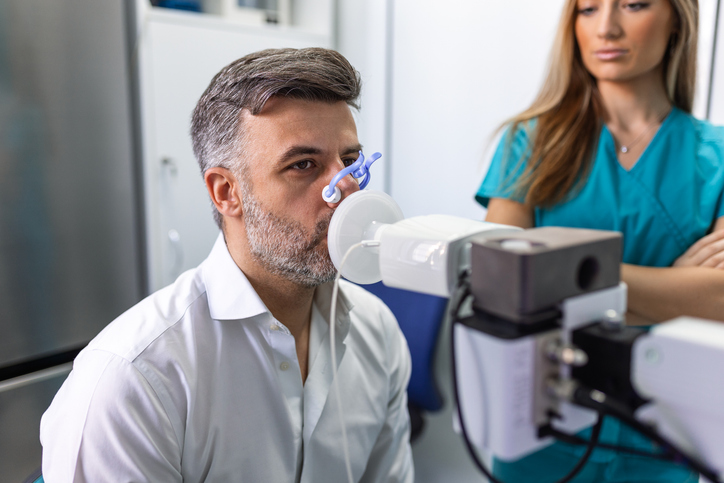
If you’re considering a career as a respiratory therapist, it’s important to understand both the everyday responsibilities of the profession and the financial investment required for your education. Respiratory therapy is a vital and rewarding healthcare field, but like most allied health careers, it requires careful planning to manage the costs and potential student debt associated with your degree.

Cost of Respiratory Therapy Education
Program costs for respiratory therapy vary depending on location, degree type, and whether you attend a public or private institution.
Associate Degree Costs
A majority of entry-level respiratory therapists earn an Associate of Science (AS) or Associate of Applied Science (AAS) degree. Costs depend heavily on your residency status and choice of school:
- In-State Tuition:
- Typically ranges from $7,000 to $15,800 for a two-year program at public community colleges or state universities.
- Example: Vermont State University’s AS in Respiratory Therapy is $17.5K per year full-time with fees. Special funding available to cover tuition for qualified students.
- University of Southern Indiana: $10.2K in-state tuition per year.
- Georgia Southern University: $5K in-state per year.
- Out-of-State Tuition:
- Can range from $20K to $75K per year at public institutions.
- Example: University of Kansas Medical Center: $72K out-of-state per year.
- Oregon Institute of Technology: $45K out-of-state per year.
- Private Colleges:
- Tuition is generally higher and will most likely make your total debt load and debt service substantially higher.
- Additional Costs:
- Books, uniforms, equipment, certification exam fees, and living expenses can add $2,000–$5,000 to your total cost.
Check Out Respiratory Therapy AOS Degrees
Bachelor’s Degree Costs
A bachelor’s degree in respiratory therapy can lead to expanded career opportunities and higher earning potential, but comes with higher costs:
- Public Colleges:
- Total cost for a four-year degree ranges from $30,000 to $48,000.
- Example: In-state tuition at the University of Nebraska Medical Center is about $12,000 per year.
- Private Colleges:
- Four-year programs typically cost $59K in total tuition.
Average Student Debt for Respiratory Therapy Graduates
Student loan debt for respiratory therapy graduates varies by degree level and institution type:
| Degree Type | Public College Debt | Private College Debt |
| Associate | $10,000–$18,500 | $20,000–$35,000 |
| Bachelor’s | $18,000–$30,000 | $30,000–$40,000+ |
- Associate Degree Graduates:
- Median student debt at graduation is typically $10,000–$18,500 at public college.
- Private school graduates often report debt in the $20,000–$35,000 range.
- Bachelor’s Degree Graduates:
- Average student debt is about $18,000–$30,000 at public colleges and $30,000–$40,000+ at private colleges.
Some graduates report much lower debt if they receive scholarships, grants, or employer tuition assistance, while others at private or for-profit schools may have higher balances.
Strategies to Minimize Student Loan Debt as a Respiratory Therapist
Scholarships and Grants
- Apply for scholarships through organizations like the American Respiratory Care Foundation, which offers awards up to $5,000 for undergraduate and postgraduate students.
- State and local scholarships, as well as institutional aid, can further reduce costs.
Employer Tuition Assistance and Loan Repayment
- Some health systems, such as Excela Health and WellRight, offer student loan repayment programs for respiratory therapists, providing up to $8,600–$15,000 in loan payments over several years in exchange for continued employment.
- Vermont State University partners with the University of Vermont Health Network to offer a tuition-free program for qualified students after other aid is applied2.
Budgeting During School
- Lower your living expenses by commuting, living with family, or sharing housing.
- Consider part-time jobs, work-study, or flexible healthcare roles to help cover costs without taking on additional debt.
Borrowing Smartly
- Prioritize federal student loans, which typically offer lower interest rates and more flexible repayment options than private loans.
- Only borrow what you truly need, and try to pay interest while in school if possible.
Loan Forgiveness Options
- Respiratory therapists working in nonprofit or public healthcare settings may qualify for federal Public Service Loan Forgiveness (PSLF) after 10 years of qualifying payments.
- Income-driven repayment plans can also help manage payments based on your income.
Impact of Student Loan Debt on Respiratory Therapists
- Career Choices:
- Debt may influence your choice of employer or location. Some may choose jobs with loan repayment benefits or higher salaries to manage debt more easily.
- Financial Stress:
- The average salary for respiratory therapists is about $86.5K per year, which generally supports manageable loan repayment, but high debt can still create financial stress if not managed carefully.
- Healthcare professionals, including respiratory therapists, often report debt-to-income ratios of 0.5 or higher, with many feeling anxious about their student loan balances.
Conclusion
Becoming a respiratory therapist is a solid investment in a stable and growing healthcare field. With careful planning-applying for scholarships, budgeting wisely, seeking employer tuition assistance, and borrowing strategically-you can keep your student loan debt under control. By understanding your options and making informed financial decisions, you’ll be well-positioned for a rewarding and financially sustainable career in respiratory care.
